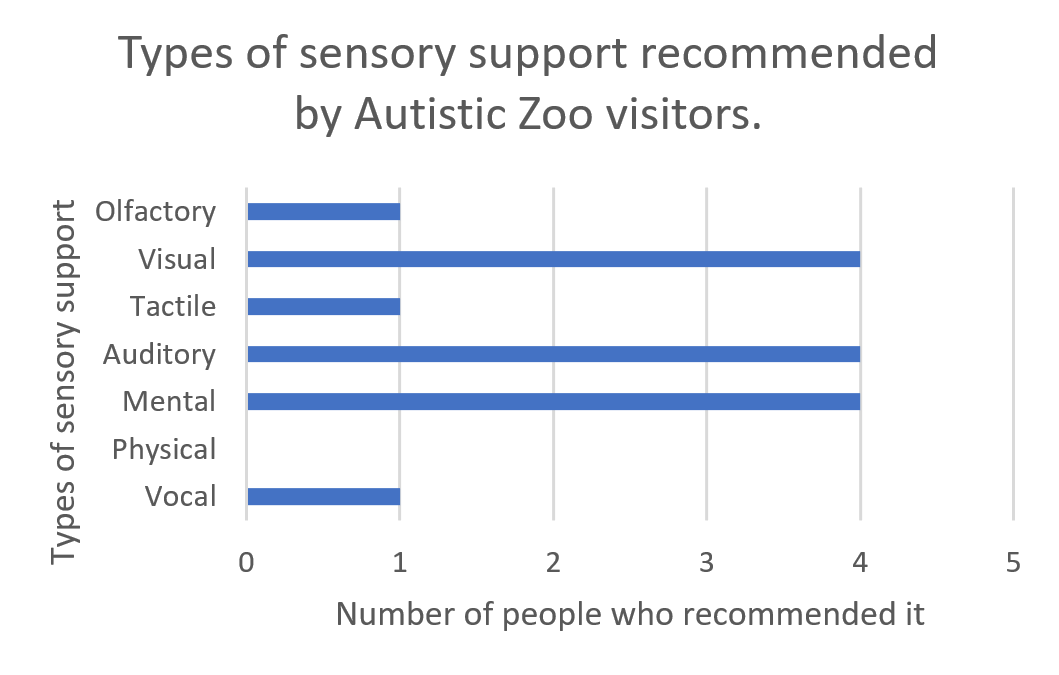Laur Elizabeth Charleston, Instructor at Reaseheath College, on Autism Awareness, and the ways zoos can become more inclusive and accessible:
The term ‘accessibility’ refers to the quality of environments, fixtures and fittings that are easy to obtain or use. Within the UK, it is estimated that 1 in 100 individuals are Autistic.
Zoos have transformed significantly throughout the years, with advances in the care of captive species in light of research and improved enclosure designs, with a transparent mission with the aims of working to conserve species for future generations through public education, awareness, and breeding programmes. Zoos have liaised with conservation charities and have helped contribute to an increase in endangered and vulnerable species populations. When we revert back to history, it can be observed that the purpose of zoos has diversified since the 1800s. From serving a sole purpose as private collections, or menageries dating back to Ancient Egyptian times, to championing 5 key areas, which include: 1) animal welfare, 2) conservation, 3) research, 4) education and 5) recreation.
BIAZA have worked to make advances in Autism support, awareness, and inclusivity, through recent initiatives, which include the ‘World Autism Acceptance Week’ campaign, which runs from late-March until April for a one-week duration. This is a wider campaign run by the National Autistic Society, and BIAZA decided to utilise this important week to run a specific campaign that strives to encourage zoos, safari-parks, and aquariums to welcome the addition of resources that could heighten the overall accessibility of environments that, may otherwise, be overstimulating for Autistic individuals. This includes: access to quiet places to support overwhelm, fidget items to accommodate stimming (self-stimulatory behaviours) and the use of headphones to reduce the prevalence of overstimulation and loud noises. In addition, BIAZA proudly set up a ‘DEAI Working Group’ which aims to support BIAZA members in all of their work to improve accessibility, diversity and inclusion.
In 2020, the world succumbed to the global Covid-19 pandemic, which forced the closure of all animal establishments. After the Government green-lighted the ‘go ahead’ for zoos, aquariums and safari-parks to re-open, we saw a significant change in the way that they were operating. Adaptations included staggered visiting times, a reduction in visitor capacity and a requirement to pre-book online to further ensure that numbers were kept to a minimum to align with Covid restrictions, such as social-distancing. In addition, indoor areas remained out of bounds for visitors, again ultimately to reduce the spread of COVID-19. Although this created staggering financial losses across the board for a variety of collections, with some faced with permanent closure, it harboured an environment that was less overwhelming and overstimulating. An environment that an Autistic individual may find easier to navigate.
In the U.K, it is estimated (in figures outlined by The National Autistic Society) that 1 in 100 individuals are Autistic. Thereby, to support the progression of zoos and legislations within the U.K – including The Equality and Diversity Act (2010) it is integral that suitable accommodations are provided to heighten the inclusivity and accessibility of such attractions. Here, it is noted that Autism is far from a ‘one size fits all approach’ which highlights that accommodations that are effective for some, may not be effective for others. Moreover, it ought to be recognised that some Autistic individuals may utilise an assortment of stimming behaviours, which can include: vocal, physical, mental, auditory, tactile, visual, and olfactory stims. All of these should be considered when increasing accessible opportunities.
For Autistic individuals, a visit to the zoo may provide a set of challenges. Environments such as zoos, are generally busy places and it can be difficult to estimate the number of visitors or to predict when the quieter times could be. One Autistic trait of some individuals is a requirement for structure, familiarity, and routine. A lack of this can be daunting for individuals who rely on those factors to achieve personal safety and security. An example of where this could be provided is through pre-arranged keeper talks – providing information in advance, such as ‘a talk outside the penguin enclosure is planned for 3pm’ helps to reduce the affiliated anxiety around not knowing what is to be expected by formulating a structured plan.
Furthermore, zoos can be overstimulating for individuals who experience sensory sensitivities due to the prevalence of varied smells, noises, and temperatures (e.g. when transitioning from tropical, indoor exhibits to standing outdoors to view elephants). This is where the addition of supportive measures would be welcomed. In contrast, it is not about totally eradicating the noises and smells, but about reducing the overall intensity for visitors who endure challenges in such areas.
As I explored my interest in this area, I asked about the ways in which zoos could become more accessible, and the following accommodations and adjustments were suggested by Autistic individuals. Note: overall it was found the Autistic individuals interviewed generally enjoy visiting zoos; but additional support would heighten overall enjoyment, comfort, and satisfaction. Some examples on how to achieve this are provided below:
1. Designated quiet spaces (reserved primarily for those who need them rather than places to eat and socialise). It is recommended that the areas are monitored to ensure that they remain ‘fit for purpose’.
2. Staggered times for school groups (to support the reduction of overwhelm/overstimulation from crowded environments and noise).
3. A set route to ensure that all animal exhibits have been seen, to reduce being overwhelmed by having to go back through the zoo/safari park/aquarium to locate them. However, it is noted that it can never be guaranteed that the animal will be on display, due to the unpredictability of animals, possibilities of animals off-show due to medical conditions, relocation or simply ‘recuperating’ in privatised areas.
4. An audio tour, presented as visitors navigate their way around the attraction. This could present information about the zoo and/or different species.
5. Provision of noise-cancelling headphones.
6. Ability to leave the environment without the need to go through gift-shops, to reduce being overwhelmed and the likelihood of meltdowns. It is noted that some Autistic children in particular may experience difficulties with this, due to a restricted understanding that they cannot buy everything in the shop.
7. Additional SEN sessions throughout varying times of the day.
8. Access to sensory gardens.
9. Noise reduction in overstimulating environments – consideration as to whether the music is necessary when the environment can already be overpowering due to an assortment of noises, smells, and people.
10. An understanding of when establishments have a ‘peak busy time’ so that these can be avoided. (I.e.: school and bank holidays).
11. Sensory packs – these could include fidget items, ear defenders/noise-cancelling headphones and maps.
These are a few simple suggestions which could go a long way in helping make a day out at a zoo or aquarium even more accessible and inclusive to everyone.
Acknowledgements
With special thanks and considerations to BIAZA, the working Diversity, Equity and Inclusion group and The National Autistic Society, for the support and for working to enhance the support available for Autistic individuals within society.
- Laur Elizabeth Charleston
Related Members
-
NewsBlog: A bunch of blokes having a chat over a brew 12th May, 2024Rebecca Reynolds, Head of Education, Conservation and Research, shares the healing benefits of a wellbeing programme at Blackpool Zoo: The World…
-
News
 Blog: There isn’t a choice we must protect our oceans 8th May, 2024MP Sally Ann Hart writes for BIAZA about why we must work to conserve our marine environments and the wildlife that call it home. This is a blue planet.…
Blog: There isn’t a choice we must protect our oceans 8th May, 2024MP Sally Ann Hart writes for BIAZA about why we must work to conserve our marine environments and the wildlife that call it home. This is a blue planet.… -
NewsMaking a Splash: new hippopotamus arrival at Dublin Zoo 8th May, 2024Dublin Zoo is delighted to welcome male hippopotamus, Ernie, who joins female Heidi at the African Plains. Ernie, who is aged 20, arrived from the West…



